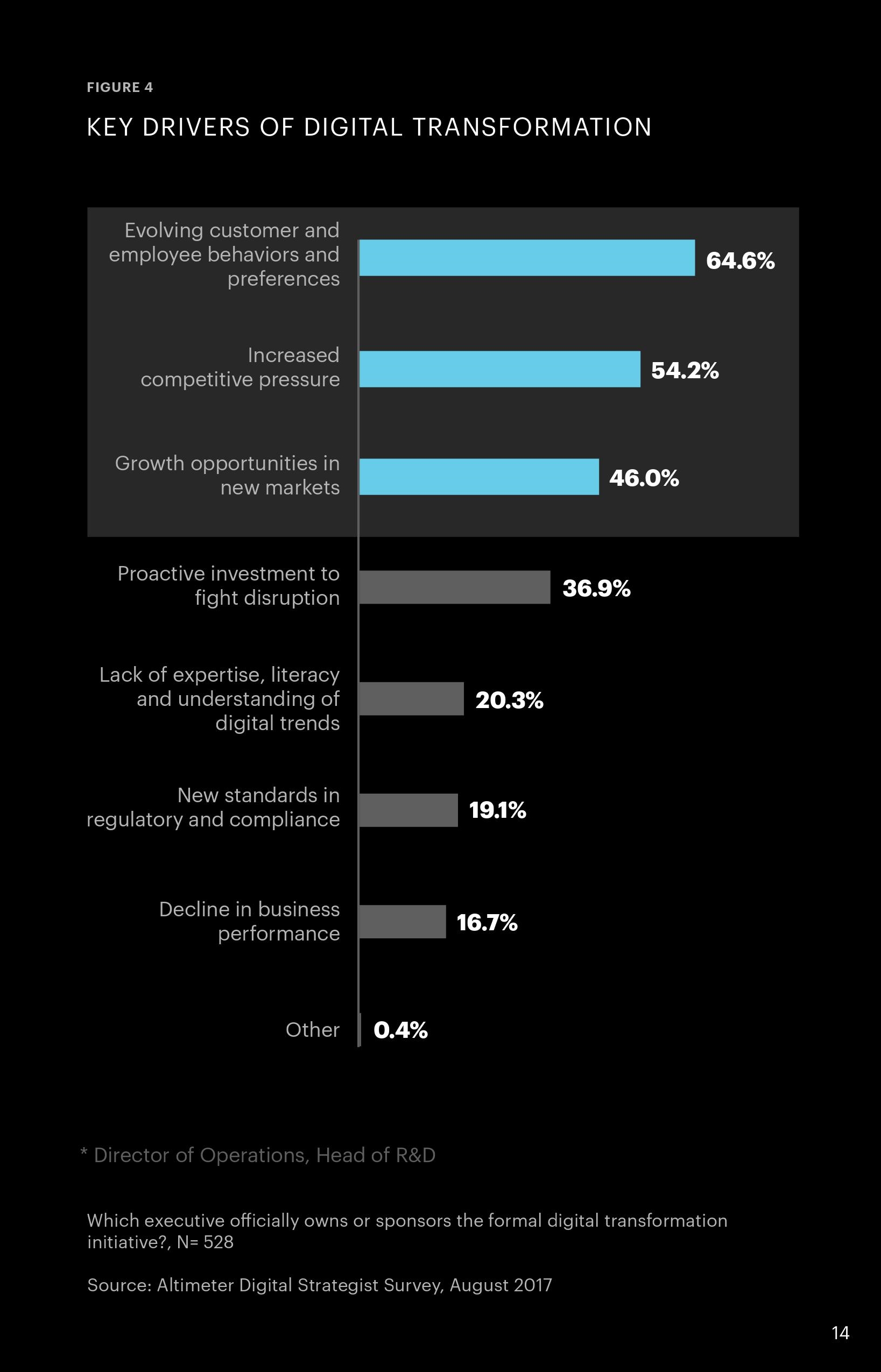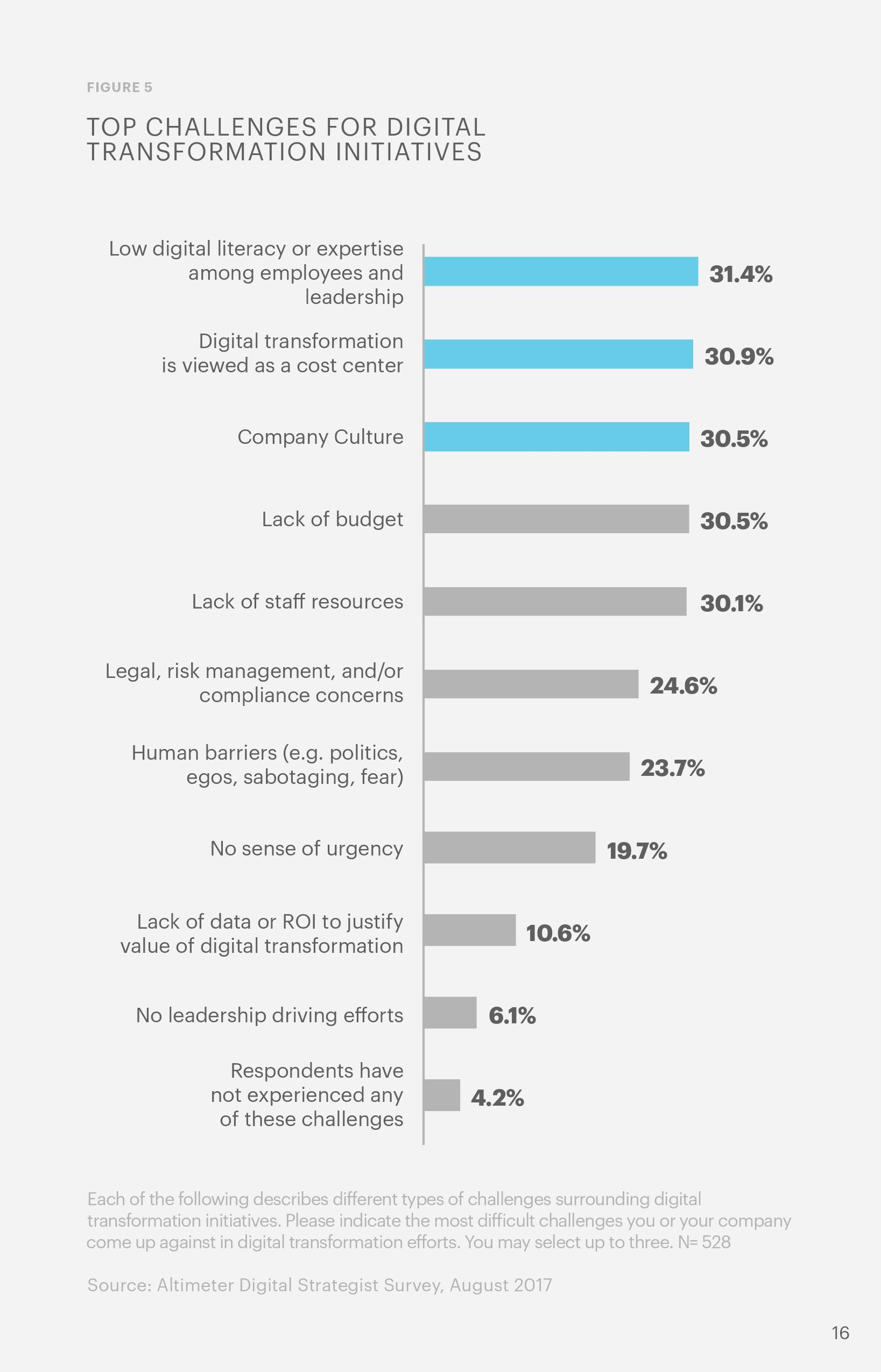
Diginomica’s Jon Reed is someone I greatly respect. He’s one of the most discerning and shrewd voices on business modernization out there. I recently had the opportunity to speak with him about the state of digital transformation and the importance of change agents in the evolving enterprise. Every time I have the chance to speak with him, I come away more enlightened and determined.
I wanted to share our conversation with you here:
Digital transformation may be overhyped, but so is business as usual – with Brian Solis
I usually dread the next digital transformation report to land in my inbox. But it’s different when I hear from Brian Solis of Altimeter Group. Here’s our latest back and forth – with some surprising data to chew on.
Diginomica: Brian, you’ve been doing this State of Digital Transformation report for three years now. Have you noticed any major changes in your report findings from the first year to this one?
Brian Solis: After three years of conducting this research, I am encouraged by the level of which companies are diversifying their efforts in digital transformation. While it’s still debated among CIOs and CMOs as to who owns digital transformation, among the more progressive companies, digital transformation is owned by a cross-functional steering committee where ownership is shared and enterprise-wide.
We found that 59.1% of companies surveyed in 2017 rely on a steering committee or workgroup with cross-functional representation. While this number is noteworthy, these groups lack formal executive sponsorship.
Companies further along what we documented as “The Six Stages of Digital Transformation,” employ formal, cross-functional committees with executive support and resource allocation (40.2%).
After three years of customer experience serving as a top catalyst for digital transformation, employee experience is also rising as a top driver. This means that savvy companies are realizing that the need to change is equally an external and internal opportunity and mandate. The same forces that are pushing connected customers in new directions are also affecting connected employees. They too demand a more intuitive, productive, collaborative and personal experience.

Diginomica: Any big surprises?
Brian: To be honest, after three years, progress is notable but not awe-inspiring. In fact, I’d go so far as to say that the state of digital transformation is lackluster. Digital transformation is still viewed as a cost-center and not an investment (31%).At the same time, many companies pay digital transformation lip service. Just because they’re investing in modern and emerging technologies doesn’t mean that they’re transforming to compete in a digital economy.

The biggest surprise however is that while most companies say that they’re investing in digital transformation, and that CX is a top driver, only 34.8% of businesses report having completely mapped out the customer journey within the last year. This is a significant drop from our 2016 report where 54% of companies reported that they had completely mapped out or were in the process of mapping out the customer journey within the last year. Yet, roadmaps are developed and investments in customer experience are made without completely understanding how customers discover, make decisions, and prefer to engage digitally.
Diginomica: One of the big findings from this year’s report is: “Companies largely don’t see disruption as a threat. Only 37% of businesses view digital transformation as an investment in the fight against market disruption.” Do you think that is a fair assessment on the respondents’ part? In other words, are the respondents correct that digital disruption is overhyped? Or are some respondents underestimating the impact?
Brian: I like the way you framed the question. Surely, “digital transformation” is over hyped. It makes for a more interesting conversation. Disruption is not overhyped. In fact, digital transformation as a business mandate is woefully underappreciated. Times, tastes, and trends are evolving. Most organizations are not. “Digital” is just the latest flavor of creative destruction. But it is the first in a long while to completely challenge the conventions of executive mindsets and traditional business models.
It’s blatantly apparent to those with open minds, experience and/or data that digital is affecting customer and employee behaviors, mindsets, values and aspirations. At this point, it’s not even a non-argument, it’s a distraction from the more important conversation of change and relevance. It’s like the misdirection or deflection we see in the news today. THIS IS HAPPENING…but, look over here! It’s buying time for an agenda but it’s finite and usually not in the best interest of stakeholders and shareholders in the long run.
On the other hand, what’s overhyped is…”business as usual.” Why is this still a thing? Executives and managers are holding on to it for dear life. It’s not unlike what we see in the coal industry. Many coal workers, for example, are being offered an opportunity for retraining but they are waiting for the coal jobs to come back as promised. Yet, the world continues to evolve. There’s a sense of entitlement involved. We did these things, we earned these things, and therefore we deserve x,y,z just because we worked hard like everyone else. But the world is changing and what happens next is a choice.
The threat and impact is real. The fact that only 37% of companies are doing something about it is not promising. At the same time, 31.4 % of companies say that the top challenge to digital transformation is low digital literacy or expertise among employees and leadership. We also learned that 31% of companies view digital transformation as a cost center.
So, I don’t see digital disruption as being overhyped. I see that there are very human challenges that get in the way of seeing disruption as a threat. Ignorance is bliss until it’s not.
Even though businesses cite “evolving customer behaviors and preferences” as the top driver of digital transformation, fewer than half invest in understanding digital customers (42%). That’s a problematic gap. What is your best explanation of that discrepancy?
There is no holistic view of the customer because there is no holistic business model to approach customer experience. The 42% attempting to understand digital customers is a start but it’s not enough. At the same time, only 34.8% have mapped out the customer journey in the last year. Yet, most companies are investing in digital transformation with an emphasis on customer experience without having access to real customer insights. This is a trend year over year unfortunately. In conversations with executives over the years, much of what’s happening today is so new, different and fast, that it’s not only challenging business models and processes, it’s also challenging executive and personal perspectives, mindsets, beliefs and conventions. Going back to the first report I published on the subject in 2014, the truth is that digital transformation is often met with very human barriers. Executives don’t know what they don’t know. Their purview is focused on shareholders and/or stakeholders. Evolving customers (and employees) is so radically different, that there isn’t standard protocol for response.
Diginomica: You said that companies are addressing the need to modernize their skills through two approaches: internal training programs (62%), and investing in new digital talent (50 percent). For internal training programs, are you starting to see approaches that work well to get existing staff modernized and also address the resistance to change that comes with these kinds of uncertainties on head count and business model?
Brian: This is a huge topic unto itself. Like customer experience, employee experience is the next big trend in business. This is the first year, that employee experience is included in the “State of Digital Transformation” research. We did so, because in complementary research projects, it’s clear that digital isn’t just affecting customers, it’s also affecting employees and prospects in the same way. Everything from culture to training to day-to-day work to incentives, aspirations and happiness needs to evolve or completely transform. This year’s research also uncovered that 52.8% of companies are investing in new expertise and job creation.
The reality is that companies face challenges with current workforce capabilities and training, retraining and recruitment are big priorities to make organizations competitive in a digital economy. 31.4% and 30.5% of companies cite “low digital literacy or expertise among employees and leadership” and “company culture” as top challenges in digital transformation respectively.
Keep in mind that it isn’t just about modernizing expertise and skillsets. Change is also driven or hindered by legacy mindsets and perspectives. There are a lot of people in organizations today who do not want to, believe they need to or even see the need for change. Almost one-fourth of companies cited human barriers such as egos, politics, fear, sabotage, etc., stood in the way of progress. And, 20% claim that there’s no sense of urgency to evolve.
Diginomica: What advice do you have for companies that find the topic of digital a bit overwhelming amidst big data, AI, social and IoT hype? Is there a better way of thinking about this than a generic view of “disrupt before you are disrupted?”
Brian: Technology is certainly a big part of digital transformation. This year, we also saw the rise of corporate innovation as part of or complementary to digital transformation initiatives. A big part of those programs is exploring new technology trends for new pilots. At the same time, IT is also becoming a partner with business units in assessing internal and external needs and aligning technology investments with business priorities. These cross-functional partnerships help advance digital transformation maturity along the “Six Stages.” Advanced organizations will always say that technology must always have a purpose regardless of how trendy it is.
About Brian
Brian Solis is principal analyst and futurist at Altimeter, the digital analyst group at Prophet, Brian is world renowned keynote speaker and 7x best-selling author. His latest book, X: Where Business Meets Design, explores the future of brand and customer engagement through experience design. Invite him to speak at your event or bring him in to inspire and change executive mindsets.
Connect with Brian!
Twitter: @briansolis
Facebook: TheBrianSolis
LinkedIn: BrianSolis
Instagram: BrianSolis
Youtube: BrianSolisTV
Snapchat: BrianSolis
The post Business as Usual is Still Business as Usual: An interview about the real state of digital transformation appeared first on Brian Solis.